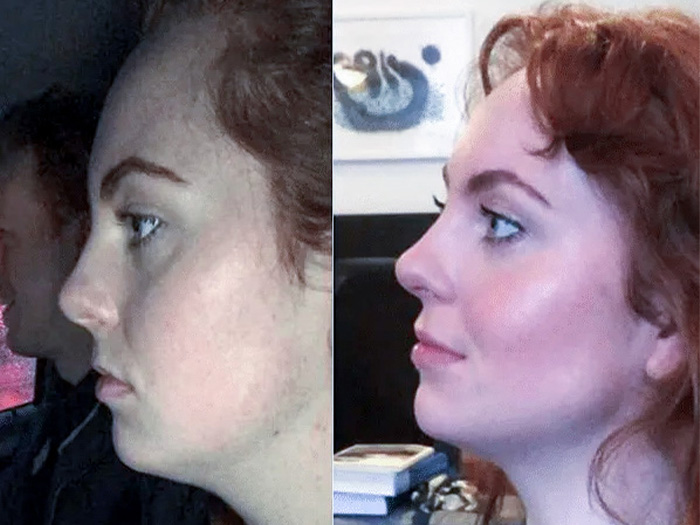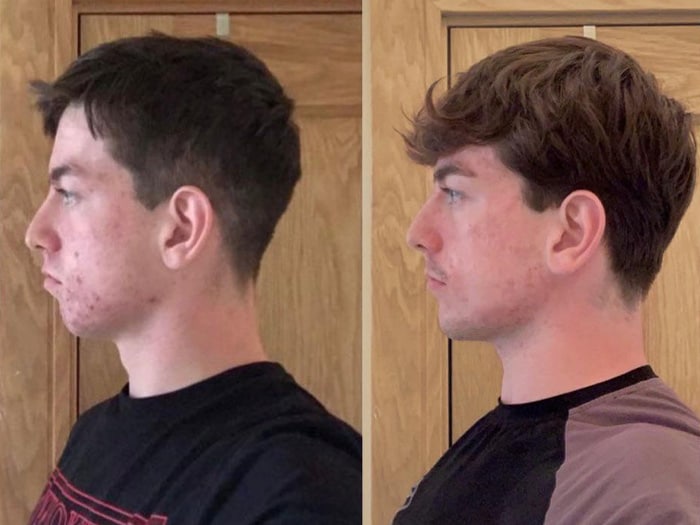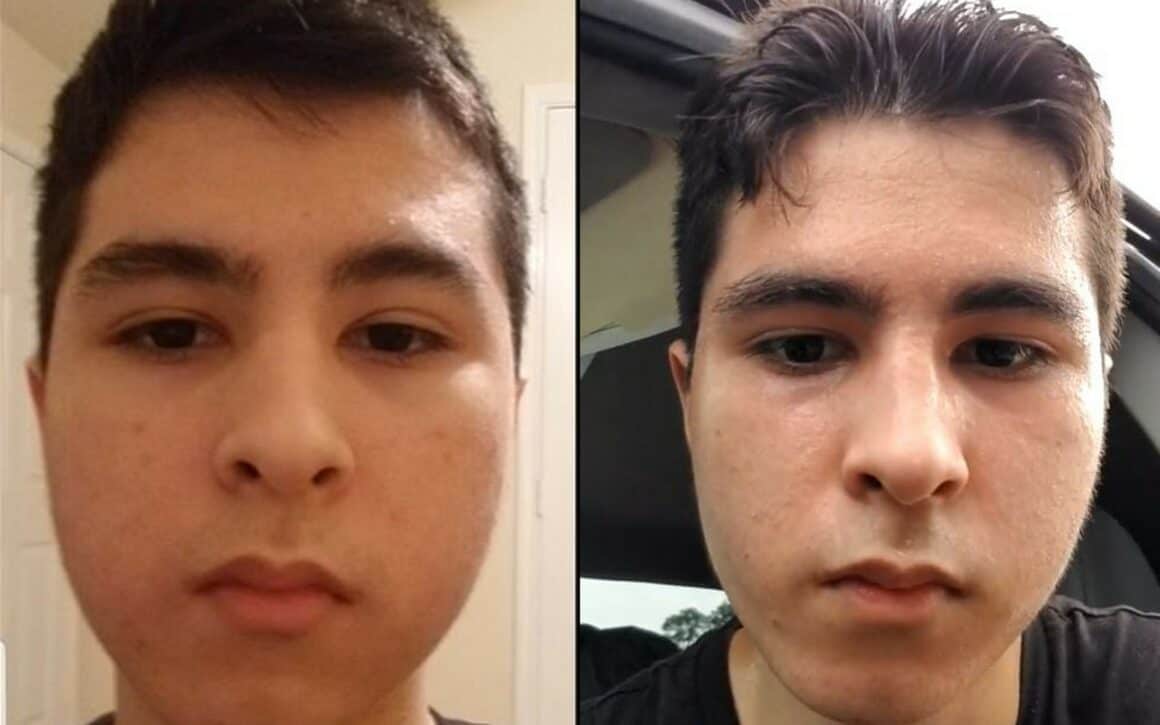The Mewing Phenomenon: Celebrity Influence and its Impact on Facial Aesthetics
Related Articles: The Mewing Phenomenon: Celebrity Influence and its Impact on Facial Aesthetics
Introduction
In this auspicious occasion, we are delighted to delve into the intriguing topic related to The Mewing Phenomenon: Celebrity Influence and its Impact on Facial Aesthetics. Let’s weave interesting information and offer fresh perspectives to the readers.
Table of Content
The Mewing Phenomenon: Celebrity Influence and its Impact on Facial Aesthetics

The pursuit of beauty is a universal human endeavor, and in our image-conscious society, celebrities often serve as aspirational figures, influencing trends and shaping perceptions of physical attractiveness. In recent years, a practice known as "mewing" has gained traction among celebrities and their followers, promising enhanced facial aesthetics through a simple, yet often overlooked, technique. This article explores the mewing phenomenon, analyzing its origins, methodology, purported benefits, and the role celebrities play in its popularization.
The Origins of Mewing:
The term "mewing" originates from the name of its proponent, Dr. John Mew, a British orthodontist who developed the technique in the 1960s. Dr. Mew’s approach focuses on the importance of proper tongue posture in influencing facial development and skeletal structure. He posits that the tongue should be pressed against the roof of the mouth, creating a gentle force that can reshape the palate, jawline, and overall facial structure over time.
The Methodology of Mewing:
Mewing involves consciously maintaining the tongue in a specific position throughout the day. The tongue should rest against the roof of the mouth, with its tip touching the back of the upper teeth. This creates a gentle pressure that, according to proponents, can stimulate bone growth and reposition the jaw. The technique is typically practiced for several hours a day, ideally throughout waking hours.
Celebrity Endorsements and the Rise of Mewing:
Mewing gained significant visibility in recent years through its adoption by celebrities. Social media platforms, particularly Instagram and TikTok, have become fertile ground for the spread of mewing trends, with influencers and celebrities showcasing their experiences and promoting the practice. This increased exposure has led to a surge in public interest, with individuals seeking to emulate the desired facial aesthetics attributed to mewing.
Purported Benefits of Mewing:
Proponents of mewing claim a range of potential benefits, including:
- Improved Facial Aesthetics: Mewing is said to enhance facial symmetry, reduce the appearance of a double chin, improve jawline definition, and create a more balanced and aesthetically pleasing facial structure.
- Enhanced Breathing: Proper tongue posture, as advocated by mewing, can improve nasal breathing by opening up the nasal passages and reducing airway obstruction.
- Reduced Risk of Sleep Apnea: Mewing can potentially alleviate symptoms of sleep apnea by improving airway structure and reducing the likelihood of obstructed breathing during sleep.
- Improved Dental Health: By promoting proper tongue posture, mewing may contribute to improved dental alignment and reduce the risk of malocclusion.
Scientific Evidence and the Debate Surrounding Mewing:
While mewing has gained popularity, scientific evidence supporting its claimed benefits is limited and often anecdotal. Some studies have shown potential positive effects of tongue posture on facial development, but more rigorous research is needed to confirm the long-term efficacy and safety of mewing. Critics argue that the technique lacks sufficient scientific backing and may even lead to undesirable outcomes, such as temporomandibular joint (TMJ) disorders or altered facial aesthetics.
FAQs about Mewing:
1. How long does it take to see results from mewing?
The timeframe for noticeable results varies greatly depending on individual factors, including age, genetics, and consistency of practice. Some individuals may see subtle changes within a few months, while others may require several years to achieve significant transformations.
2. Is mewing safe?
While mewing is generally considered safe, there are potential risks associated with improper technique or prolonged practice. Consult with a qualified healthcare professional before embarking on any new health practice, particularly one involving changes in facial structure.
3. Can mewing reverse existing facial features?
Mewing is not a magic solution for drastically altering facial features. While it may enhance existing features and improve facial symmetry, it cannot completely reverse or significantly alter pre-existing characteristics.
4. Is mewing a replacement for traditional orthodontic treatment?
Mewing is not a substitute for professional orthodontic care. If you have severe dental misalignment or other orthodontic concerns, consult with a qualified orthodontist for appropriate treatment.
5. How can I learn the correct mewing technique?
There are various resources available online and in books that provide guidance on mewing techniques. It is crucial to consult with a qualified professional, such as an orthodontist or speech therapist, to ensure proper technique and avoid potential complications.
Tips for Practicing Mewing:
- Start gradually: Begin by practicing mewing for short intervals and gradually increase the duration as you become more comfortable.
- Be consistent: Regular practice is key to achieving noticeable results. Aim to practice mewing throughout the day, even during activities like reading or watching TV.
- Pay attention to your posture: Maintain good posture while mewing, as this can contribute to optimal tongue placement and facial alignment.
- Monitor for discomfort: If you experience pain or discomfort while mewing, adjust your technique or consult with a healthcare professional.
- Don’t expect overnight results: Mewing is a long-term practice that requires patience and consistency. It may take months or even years to achieve significant changes.
Conclusion:
Mewing has emerged as a popular practice in the realm of facial aesthetics, driven by celebrity endorsements and the allure of natural, non-invasive techniques for enhancing facial features. While scientific evidence supporting its claimed benefits remains limited, the practice continues to attract attention and inspire individuals seeking to improve their appearance. It is crucial to approach mewing with caution, seeking guidance from qualified professionals and understanding that it is not a substitute for traditional orthodontic treatment. Further research is necessary to fully understand the long-term effects and potential risks associated with mewing. Ultimately, individuals should make informed decisions based on their individual needs and consult with healthcare professionals before embarking on any new health practices.








Closure
Thus, we hope this article has provided valuable insights into The Mewing Phenomenon: Celebrity Influence and its Impact on Facial Aesthetics. We appreciate your attention to our article. See you in our next article!